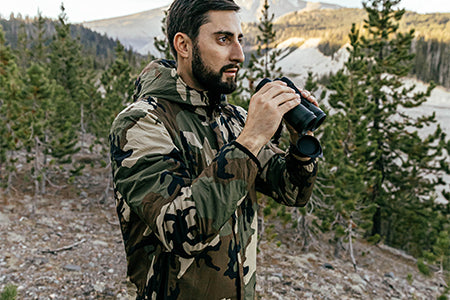It’s easy to think of hydration as little more than packing a water bottle and maybe a sports drink or two, but as with all things in an expedition there’s a lot more to consider. Any sojourn into wild places necessitates planning, outfitting, and resourcefulness, and few things are more crucial to a successful adventure than managing your hydration.

Gear for Your Activity
You’d be forgiven for assuming that “gearing up” to stay hydrated amounts to filling up a water bottle and tossing it in your bag, but it’s worth delving deeper. Hydration packs are a faster, more efficient method than a water bottle, equipped with a drinking tube that doesn’t require you to stop moving in order to use. This is particularly important when you need to maintain active output for your layering system’s fast-drying and moisture-transporting performance. Hydration packs come tailored for a variety of use cases like running, hiking, cycling, and more. These design differences can range from optimization (low profile for cycling, or a vest instead of a pack for running) to crucial (snowsports packs built specifically to prevent freezing), so do your homework before you head out.

Optimize Your Performance
Hydration doesn’t begin and end with packing water. Especially in high-temperatures scenarios, your body can shed water faster than you can replenish it. First and foremost, layer according to your destination, season, and activity; choosing inappropriate layers for any of these will result in poor regulation of your body temperature and inefficient moisture transport, both of which impede your body’s ability to optimize hydration through sweat output. For hot climates, consider ultralightweight, antibacterial layers like the Todra K1 S.S. Crew.
If you’re planning an adventure in a hot climate you’re not already familiar with, take some time to acclimate to it before setting out. Keep an eye out for shady areas and make rest breaks under them frequently; avoid the temptation to push on just a little further, as over-exertion is all too easy to come by. In addition to packing water, choose snacks that will aid in hydration; if you’ll be moving through humid conditions, pack salty snacks to help maintain healthy sodium levels. And as fun as they may be back home, leave caffeine and especially alcohol out of your bag; both of these can lead to dehydration and increase your risk of heat illness or even heat stroke.

Learn Survival Dos & Don’ts
The last thing you’ll want is to find yourself stranded in a survival situation with no means of hydration. In these worst-case scenarios, knowing how to forage for water is crucial. Different climates and conditions require different techniques, and it’s important to know the right ones based on your prospective adventure.
Hot Environments
DO: Research how to set up a solar still. In short: dig a hole, place a small container at the bottom, and run a tube from the container to the top of the hole. Stretch a bit of tarp over the top, anchor with rocks, plug any holes with sand, and weigh down the center with another rock. Over time, condensation will form on the underside of the tarp and drip down into the container, which you can then drink without disturbing your setup via the tube.
DON’T: Whatever the movies might have told you, don’t drink your own urine to rehydrate. Besides being gross, it’ll also leave you even more dehydrated; your body will use that much more of its water to flush out the salt in your urine.

Cold Environments
DO: Melt snow into drinking water. If you don’t have any proper cooking vessels, prop a stone slab (or a metal sheet, if you have one) over your fire, assembling the supporting stones in descending size to tilt water down toward your container. Assembling stones atop the slab in a funneling shape can help guide the water as well
DON’T: Never eat snow without melting it first. Being mostly air, snow is highly inefficient as a source of hydration. Eating enough of it to make an impact on your hydration would also deeply chill your core and eventually lead to hypothermia.






0 Comments